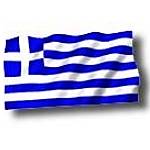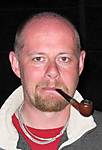Quoted Text
It’s sad! Obviously, voodoo curses came from the unspeakable dirty Viper snake, get real and the final varnish finishes on the model suffered what the Americans call as FUBAR - FXcked Up Beyond All Recognition.
When I started building the model, I did not expect to present the CHAPTER VIII under this title. Bus as all the sad & bad situations in life, it was unexpected and accompanied by great frustration because suddenly I saw months effort to dissolve in only few minutes. The old colours (or bad white spirit solvent) that I used, have led to drying crack. Unfortunately, I ignored all the warning signs such as thick grains left by the white colour in which I primed the scale model before the final painting. Having as target to make this model alive again, just like Iron Maiden Eddie’s
Live After Death, I decided to try a full reset – after all, I had nothing to lose! The scale model was already FUBAR.

The following photos show the unsuccessful paint process. The problems appeared marked inside the red circles. Unfortunately, I have no photos of the model while looked completely written-off, because at that time I was not in a mood to take pictures!






ModelStrip, was the first thing came up as the most conventional solution to try paint removing. Following the instructions on the box, a generous stuff applied on the model, wrap it with airtight plastic bag to prevent drying and wait about 15 hours to let the chemical work. Opening the bag next day and checking the results, the colour (or rather the colour layers) were soft and could be removed by rubbing vigorously with an old toothbrush. Unfortunately, using the brush on some very delicate spots (even with careful use), had as result to break / or ruin a couple of plastic pieces. Moreover, the paint could not be removed through narrow points and difficult locations.

At this point and while I’ve already used all the ModelStrip material without being satisfied with the outcome, I decide to change tactics to something more unconventional, such as oven cleaner.

Following the product’s directions as always, I sprayed the model with the material, wrap it with airtight plastic bag to prevent drying and wait about 15 hours to let the chemical work. Testing results next day, the oven cleaner failed no more than ModelStrip. I noticed that the colour could be removed but only when pressure and persistent rubbing with brush and that was prohibitive for some parts of the model. Not having another solution, I approached the most unconventional method and visit a science specialist - my local grocery store!
- Hey man! I need something really strong to clean up kitchen’s oven?
- Really strong? Use this!
…and he gives me a dust covered 1lt plastic bottle found in an almost unreachable shelf. Reading the bottle’s label, I found out that it contains
sodium hydroxide also known as
lye (corrosive alkaline substance) or caustic soda and is a caustic metallic base. It is used in many industries, mostly as a strong chemical base with chemical type NaOH.


- Are you sure that this will work? Are you sure that this is safe to use?
- Trust me. It’s gonna clean up the kitchen’s oven like a nuclear bomb!
- How much?
- 3.50 € . Take it or leave it.
Thinking about a possible failure, I filled a plastic bowl with the milky liquid contained in the bottle and threw all the model pieces inside. As long as the autogyro model was already FUBAR, I had nothing to loose to try. I sealed the bowl with a cover and leave the sodium hydroxide to act for 20-30 minutes while the instructions sets out to wipe the sodium hydroxide chemical liquid after 10 minutes. Opening the plastic bowl’s cover, a nice surprise followed...







The truth is I was delighted! Styrene pieces simply and magically totally striped off the enamel colour layers! Absolutely success, without even apply brush cleaning! Amazing product - incredible grocer! Just because I couldn’t believe it and I wanted to make sure that the colour striped off because of the sodium hydroxide chemical (and not the previous used ModelStrip product or the kitchen oven cleaner), I decide to experiment. I threw in a bowl, already filled with the chemical, a 1/18 scale female figure that I was about to convert for a future project. The specific 1/18 scale female figure, is made by Fast Women brand and can be found by clicking
HERE). The results after just 15 minutes in the sodium hydroxide chemical - Perfect! The following pictures, show the "before" and the "after".



 Keep in mind that the sodium hydroxide is (and thus should be considered) a strong caustic base. This means that:
Keep in mind that the sodium hydroxide is (and thus should be considered) a strong caustic base. This means that:[/size]
- Throughout the impregnation of the model parts into sodium hydroxide, you should take all the necessary protective measures (like mentioned in the warnings on the bottle’s label) and is certainly to use disposable surgical gloves made by latex and breathing mask with appropriate filters to protect against possible fumes.
- The colour stripped plastic parts must be rinsed with soft acid to neutralize the caustic base and produce salt and water. Dunking the colour striped parts in plastic container filled with cooking vinegar and then rinsing with plenty of lukewarm water, plastic is now safe to handle with bare hands.











 Tony
Tony











































































































































































